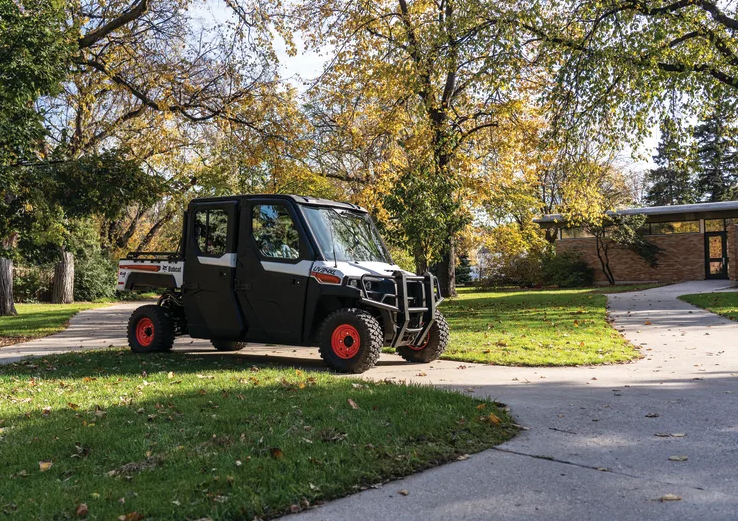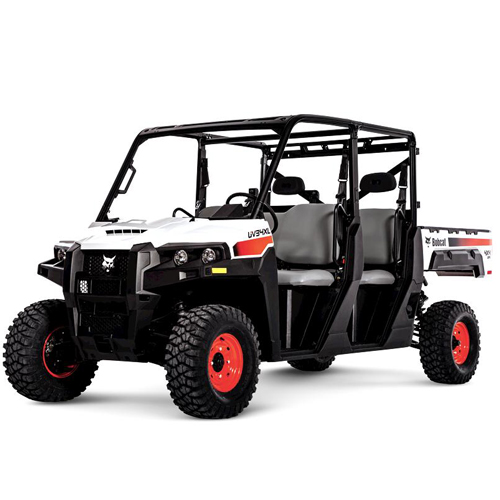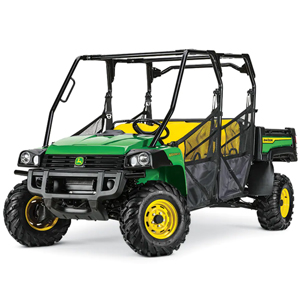Utility vehicles have become essential tools for modern construction projects. These versatile machines help crews move materials, transport workers, and handle tough terrain that regular vehicles can’t manage. From small ATVs to larger UTVs, the right utility vehicle can make a big difference in how fast and well your project goes. This guide shows how to pick and use these vehicles to make your construction projects run better. We’ll share tips from real builders, data on vehicle performance, and practical examples of how they solve common job site problems. You’ll learn how utility vehicles can improve your site logistics, help manage your equipment fleet, and speed up project timelines. With the right approach, these workhorses can help you finish jobs faster, safer, and with fewer headaches.
Understanding the Role of Utility Vehicles in Construction Projects
Construction sites buzz with activity, and utility vehicles keep everything moving. These workhorses have become essential tools in modern construction projects. Unlike heavy machinery that handles major tasks, utility vehicles manage daily operations that keep projects on schedule. Today’s construction demands smart solutions for moving people, tools, and materials. Utility vehicles for construction fill this gap perfectly. They work alongside heavy equipment like excavators and cranes, handling the smaller but crucial tasks that happen hundreds of times daily. From carrying workers across large sites to moving materials quickly, these vehicles boost productivity. Modern construction site operations rely on them for speed and efficiency that wasn’t possible before.
Analyzing Construction Site Demands
Every construction project faces unique challenges. Rough terrain, tight spaces, and changing weather all impact how work gets done. Durable utility vehicles are built to handle these demands. Construction logistics improve dramatically with the right vehicles. A well-managed vehicle fleet can:
- Transport workers safely between work zones
- Deliver tools and materials exactly when needed
- Access difficult areas where larger vehicles can’t go
- Reduce walking time and worker fatigue
Construction fleet management has become a science of its own. Companies track vehicle use, maintenance needs, and performance to maximize their return on investment. The best site transport vehicles combine durability with versatility, allowing one vehicle to serve multiple functions. The terrain at construction sites often presents challenges. Vehicles need off-road capability to navigate through mud, gravel, and uneven ground. This is where purpose-built construction site vehicles excel over standard commercial options.
With rising fuel costs and environmental concerns, many companies now look at electric utility vehicles as alternatives. These provide the same functionality with lower operating costs and zero emissions at the point of use.
When chosen wisely, utility vehicles become valuable assets that pay for themselves through improved efficiency and reduced labor costs. They form the backbone of construction site logistics and keep projects moving forward day after day.
Key Design Considerations and Utility Vehicle Features for Construction
When planning construction projects, choosing the right utility vehicles can make or break your efficiency. Construction site vehicles need special features that match the demands of tough environments. The best vehicles combine strong performance metrics, smart design, and safety features that protect workers.
Today’s modern utility vehicles offer more than just basic transportation. They help move materials, workers, and equipment across challenging terrain. Picking vehicles with the right specs saves time and money while keeping projects on schedule.
Essential Utility Vehicle Specs
When selecting utility vehicles for construction, focus on these key specifications:
- Payload capacity – How much weight the vehicle can safely carry
- Towing capability – Important for moving trailers with materials
- Engine power – Determines performance on hills and rough terrain
- Fuel efficiency – Affects operating costs over time
- Safety features – Including rollover protection and visibility aids
Construction material transport requires vehicles that can handle heavy loads while navigating tight spaces. Look for features like reinforced beds, tie-down points, and adjustable suspension systems that adapt to changing loads. Regular utility vehicle maintenance extends vehicle life and prevents costly downtime. Follow manufacturer guidelines for service intervals and train operators to report issues early.
Evaluating Off-Road Capabilities
Off-road vehicles must handle the diverse conditions found on construction sites. From muddy access roads to steep grades, your vehicles need reliable traction and stability. Key off-road features to consider include:
- Ground clearance – Higher clearance prevents getting stuck on obstacles
- Four-wheel drive – Essential for slippery or uneven surfaces
- Tire selection – Different tread patterns for various terrain types
- Suspension systems – Absorbs impacts while maintaining stability
- Approach and departure angles – Allows navigation over steep obstacles
The best construction site vehicles combine these capabilities with practical features like enclosed cabs for weather protection and storage compartments for tools and equipment. Utility vehicle applications on construction sites continue to expand as manufacturers develop more specialized options. From electric models for indoor use to heavy-duty diesel vehicles for the toughest jobs, there’s a utility vehicle designed for nearly every construction task.
By carefully matching vehicle capabilities to your specific project needs, you’ll improve efficiency, safety, and overall project outcomes.
Implementing Utility Vehicles in Construction Site Logistics
Utility vehicles have become vital tools on modern construction sites. These versatile machines help move materials, tools, and workers across job sites quickly and safely. Adding these vehicles to your construction fleet can cut down on wasted time and make your whole project run smoother. To effectively integrate utility vehicles into your operations:
- Map your site layout first to identify main transport routes
- Choose the right vehicles based on terrain and load requirements
- Train operators thoroughly on safe vehicle operation
- Create a maintenance schedule to prevent breakdowns
- Coordinate with other site vehicles to avoid bottlenecks
Utility trucks and vans can handle many tasks that once required heavy equipment. For example, a single utility vehicle can transport tools, small materials, and workers to different areas of the site in one trip. This cuts down on walking time and keeps your team productive.
Optimizing Construction Material Transport
Smart use of utility vehicles for material transport can drastically improve site efficiency. When planning material movement:
- Position vehicles at strategic material staging areas
- Use vehicles with the right cargo capacity for specific materials
- Establish clear loading/unloading protocols
- Create dedicated routes for material transport
- Schedule deliveries to avoid site congestion
Construction site logistics work best when utility vehicles complement other equipment. Your utility vehicles should work alongside (not compete with) heavy machinery. For instance, while cranes handle major lifting, utility vehicles can manage the smaller material movements that happen constantly throughout the day.
Modern utility vehicles offer features specifically designed for construction needs:
- Four-wheel drive for rough terrain
- Expandable cargo beds
- Towing capabilities for smaller equipment
- Weather protection options
- Electric models for indoor use
By thoughtfully implementing utility vehicles into your construction transportation system, you’ll see immediate improvements in how efficiently materials and workers move around your site. This leads to faster completion times and better use of your labor resources.
Leveraging Data and Fleet Management for Enhanced Project Outcomes
Today’s construction projects rely heavily on utility vehicles to move materials, transport workers, and support daily operations. Smart companies now use data and modern technology to get more from their construction fleet. By tracking how vehicles perform, project managers can make better choices about when to rent, repair, or replace equipment. This leads to less downtime and better project results.
Data-Driven Utility Fleet Operations
Construction fleet management has changed dramatically with the rise of data analytics. Project managers can now track:
- Fuel usage per vehicle
- Hours of operation
- Maintenance needs
- Driver behavior
- Job site travel patterns
This information helps companies decide whether utility vehicle rental makes more sense than buying. For example, data might show that certain vehicles sit unused for weeks, making them perfect rental candidates. Similarly, tracking maintenance needs helps prevent breakdowns that can delay projects.
Performance metrics also reveal which utility vehicles work best for specific tasks. A company might discover that smaller, more fuel-efficient vehicles handle certain jobs just as well as larger ones, cutting costs significantly.
Maximizing Utility Vehicle Efficiency Through Technology
New technology in utility vehicles has transformed construction site operations. GPS tracking systems allow managers to see where every vehicle is at any moment. This helps with:
- Reducing idle time
- Optimizing routes
- Ensuring vehicles are where they need to be
- Preventing unauthorized use
Many modern construction vehicles now include sensors that monitor engine health, tire pressure, and other vital systems. These sensors send alerts before problems become serious, reducing unexpected breakdowns.
Electric utility vehicles are another innovation changing construction sites. They produce no emissions, run quietly, and often cost less to maintain than traditional fuel-powered options. Data shows they work especially well for indoor projects or environmentally sensitive areas. By combining good data with the right technology, construction companies can dramatically improve how they use their utility vehicle fleet, leading to faster project completion and higher profits.
Maintenance, Safety, and Lifecycle Strategies for Construction Vehicles
Construction vehicles need regular care to keep running well. Good maintenance not only makes these vehicles last longer but also keeps workers safe. Smart utility vehicle maintenance saves money over time and prevents costly breakdowns.
When you take care of your construction site vehicles regularly, you can avoid big problems. This includes checking fluids, tires, and parts that wear out. Planning maintenance ahead of time helps keep your utility vehicles for construction ready when you need them.
The cost of owning utility trucks goes beyond the purchase price. You must think about how fast they lose value (depreciation) and how much repairs will cost over time. Good maintenance scheduling helps manage these costs better.
Best Practices in Utility Vehicle Maintenance
Regular maintenance keeps your construction vehicles running smoothly. Here are key practices to follow:
- Check engine oil and fluids weekly
- Inspect tires for wear and proper pressure
- Test lights and safety features before each use
- Clean vehicles regularly to prevent dirt buildup
- Follow the manufacturer’s service schedule
Preventive maintenance stops problems before they start. This means replacing parts before they fail and fixing small issues before they become big ones. This approach helps your utility vehicle fleet stay reliable and safe.
Safety inspections should be part of your routine. Check brakes, steering, and warning systems often. Train operators to spot and report problems early. When utility vehicle safety is a priority, accidents happen less often.
Good record-keeping helps track the health of your vehicles. Keep logs of all maintenance, repairs, and inspections. This information helps you plan for future needs and know when it’s time to replace aging vehicles in your construction fleet.
What’s Next?
Utility vehicles have become essential tools for streamlining construction projects. These versatile machines boost site efficiency while handling tough terrain and heavy loads. By choosing vehicles with the right features and maintaining them properly, construction teams can significantly improve their material transport and overall project timeline. The integration of data-driven fleet management further enhances productivity and reduces costly downtime. When properly implemented, modern utility vehicles create safer, more productive construction sites that deliver projects on time and within budget.
Explore our wide range of top-brand construction tools and equipment today! Whether you’re looking to rent or buy, Rentalex has everything you need for your next project. Visit our Tampa location or contact us at (813)971-9990 for more information.











